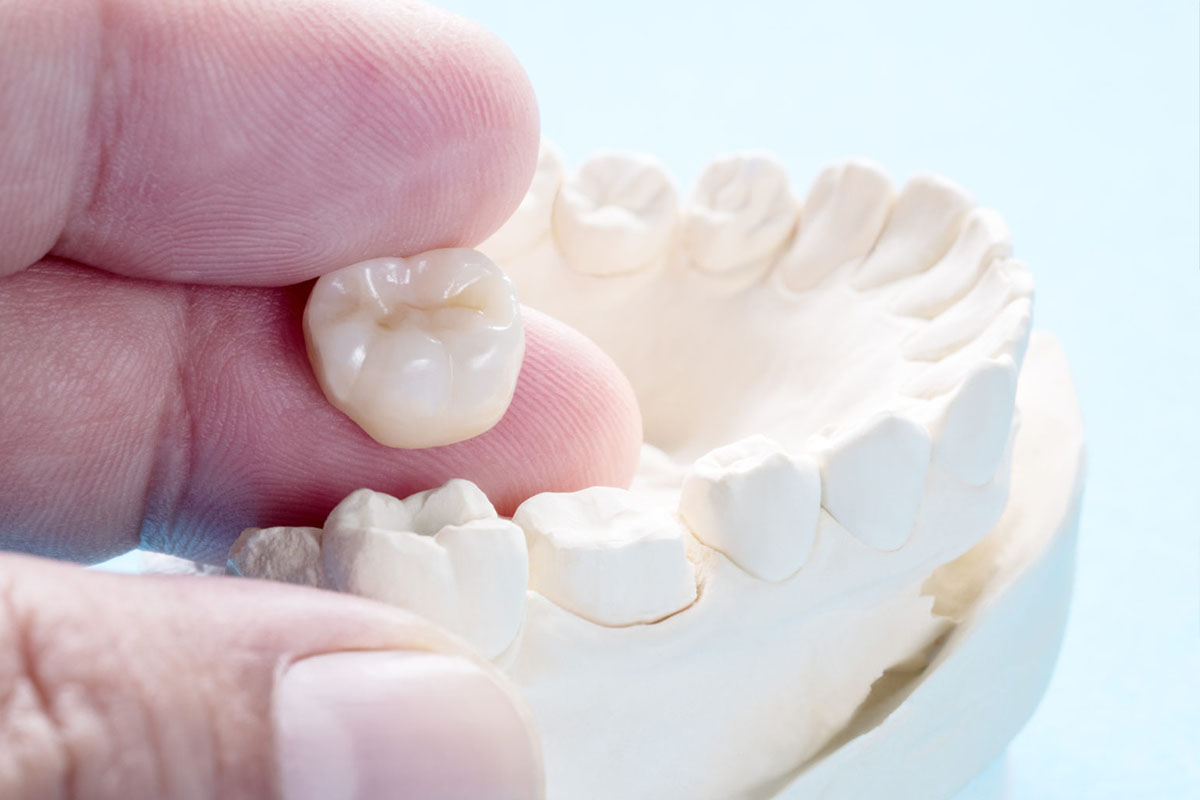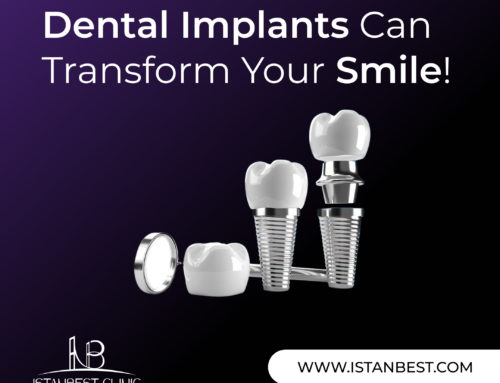When teeth are chipped or cracked, dental crowns step in as a reliable solution. These restorations protect against bacteria and allow for normal eating and drinking. While they may not replicate natural teeth completely, dental crowns are a practical and aesthetic alternative to maintain your precious smile.

What are dental crowns
Dental crowns, offered at IstanBest Clinic, are customized caps that come in various shapes and sizes. They are used to cover and safeguard damaged teeth, mimicking their natural appearance. With proper care, dental crowns can last up to two decades.
Dental crowns can come in different shapes and sizes, but their fundamental purpose remains the same – to cover and safeguard a broken or damaged tooth. They are typically made from durable materials such as porcelain, metal, or a combination of both, ensuring long-lasting performance.
One of the key advantages of dental crowns is their durability, with a well-maintained crown capable of lasting up to 20 years or even more. However, proper care and oral hygiene practices are essential for ensuring the longevity of dental crowns.
Read More: Zirconia and Porcelain Dental Crowns – Which one to choose?
Exploring Crown Options: Types of Dental Crowns Offered at IstanBest Clinic
At IstanBest Clinic, patients have the option to choose from a variety of dental crown materials to suit their individual needs. These options may include:
- Porcelain Crowns: Porcelain crowns are highly popular among patients who desire a natural appearance for their teeth, particularly for front teeth. They are known for mimicking the natural look of teeth with great precision.
- Stainless Steel Crowns: Stainless steel crowns are typically used as temporary crowns to protect the tooth while the permanent crown is being made. They are effective in preventing bacteria and decay from entering the treatment site during the waiting period for the permanent crown. Stainless steel crowns are rarely used as permanent crowns and are replaced with the permanent crown when it is ready.
- Gold Crowns: Gold crowns, although less common now due to the introduction of porcelain and titanium, are still used and are typically used to replace molars at the back of the mouth.
- Metal (Titanium) Crowns: Titanium crowns are known for their durability and resistance to decay, making them incredibly strong and long-lasting. They are considered the most durable option but also the most expensive.
- Porcelain and Metal Hybrids: These crowns combine the durability of titanium with the natural appearance of porcelain, making them a popular choice for both front and back teeth to enhance both aesthetics and durability.
- Resin Crowns: Resin crowns are the least expensive type of crown, but they are becoming less popular due to the introduction of porcelain and titanium crowns.
- Temporary Crowns: Temporary crowns, typically made from acrylic-based metals, are used to cover teeth temporarily while patients wait for their permanent crowns. They usually remain in the mouth for up to two weeks and require care during eating to avoid breakage or dislodging.
At IstanBest Clinic, the skilled dental professionals guide patients in choosing the most suitable type of crown material based on their needs and preferences. Each crown option has its unique advantages and considerations, and the team at IstanBest Clinic ensures that patients are well-informed to make the best decision for their oral health.

Common reasons to get a dental crown
Determining whether a dental crown is necessary can sometimes be unclear. Your dentist will conduct a thorough assessment of your mouth and the condition of the affected tooth to determine the most appropriate treatment plan. Dental crowns may be recommended for various reasons, including:
- Aesthetics: Dental crowns can be used to restore the appearance of a tooth that has been damaged due to accidental trauma, providing a natural-looking and aesthetically pleasing solution.
- Tooth Weakness: Teeth that have been weakened due to decay or cavities may require dental crowns to restore their strength and integrity, preventing further damage.
- Implant Recovery: Dental crowns are commonly used to restore dental implants, providing a functional and attractive replacement for a missing tooth.
- Large Fillings: Teeth with large fillings that have become compromised may benefit from dental crowns to provide additional support and protection.
- Tooth Protection: Dental crowns can be used to cover and protect a damaged natural tooth, preventing further deterioration and preserving its function.
- Root Canal Treatment: Teeth that have undergone root canal treatment are often crowned to protect the weakened tooth structure and ensure its long-term stability.
- Bite Alignment: Dental crowns can also be used to correct bite alignment issues (malocclusion), helping to improve the overall function and alignment of the teeth.
Your dentist at IstanBest Clinic will carefully evaluate your dental condition and recommend dental crowns if they are deemed necessary to restore your oral health and achieve optimal treatment outcomes.
Dental Bridge Crowns
A dental bridge consists of three or more connected dental crowns and is used to replace one or more missing teeth. The outer crowns of the bridge are placed over the two teeth on each side of the gap left by the missing tooth, while the inner crowns replace the missing tooth or teeth.
Dental bridges are a reliable solution to restore the appearance and function of your smile and prevent issues like teeth shifting. Your dentist may recommend a dental bridge after a thorough evaluation of your dental condition.
Dental Crown Process: Steps at IstanBest Clinic
Getting a dental crown is a common and routine procedure, but it typically requires multiple visits to your dentist at IstanBest Clinic. The process of dental crown implementation involves several steps to ensure a precise fit and natural appearance. Here are the general steps involved:
- Tooth Preparation: Your dentist will begin by treating your tooth, which may involve removing any decay or damaged areas to create a stable foundation for the crown.
- Tooth Impression: After tooth preparation, your dentist will take an impression or mould of your tooth. This ensures that the crown is designed to fit perfectly on top of the damaged tooth, mimicking the shape and size of your natural teeth.
- Temporary Crown Placement: While your permanent crown is being created in a dental laboratory, a temporary crown will be fitted to your tooth. This temporary crown protects the tooth and maintains its function until the permanent crown is ready. It’s important to take care of the temporary crown and avoid hard or sticky foods that may loosen it.
- Crown Fabrication: The impression of your tooth is sent to a dental laboratory where your permanent crown will be fabricated. This process usually takes about a week, but the timeline may vary depending on the materials and techniques used.
- Permanent Crown Placement: Once your permanent crown is ready, you will return to the dentist for its placement. Your dentist will carefully remove the temporary crown and fit the permanent crown onto your tooth, ensuring a precise fit and natural appearance.
The dental crown process at IstanBest Clinic involves multiple steps to ensure that you receive a high-quality crown that restores the function and appearance of your tooth. Your dentist will guide you through each step of the process and provide you with instructions on how to care for your crown for optimal longevity and oral health.




